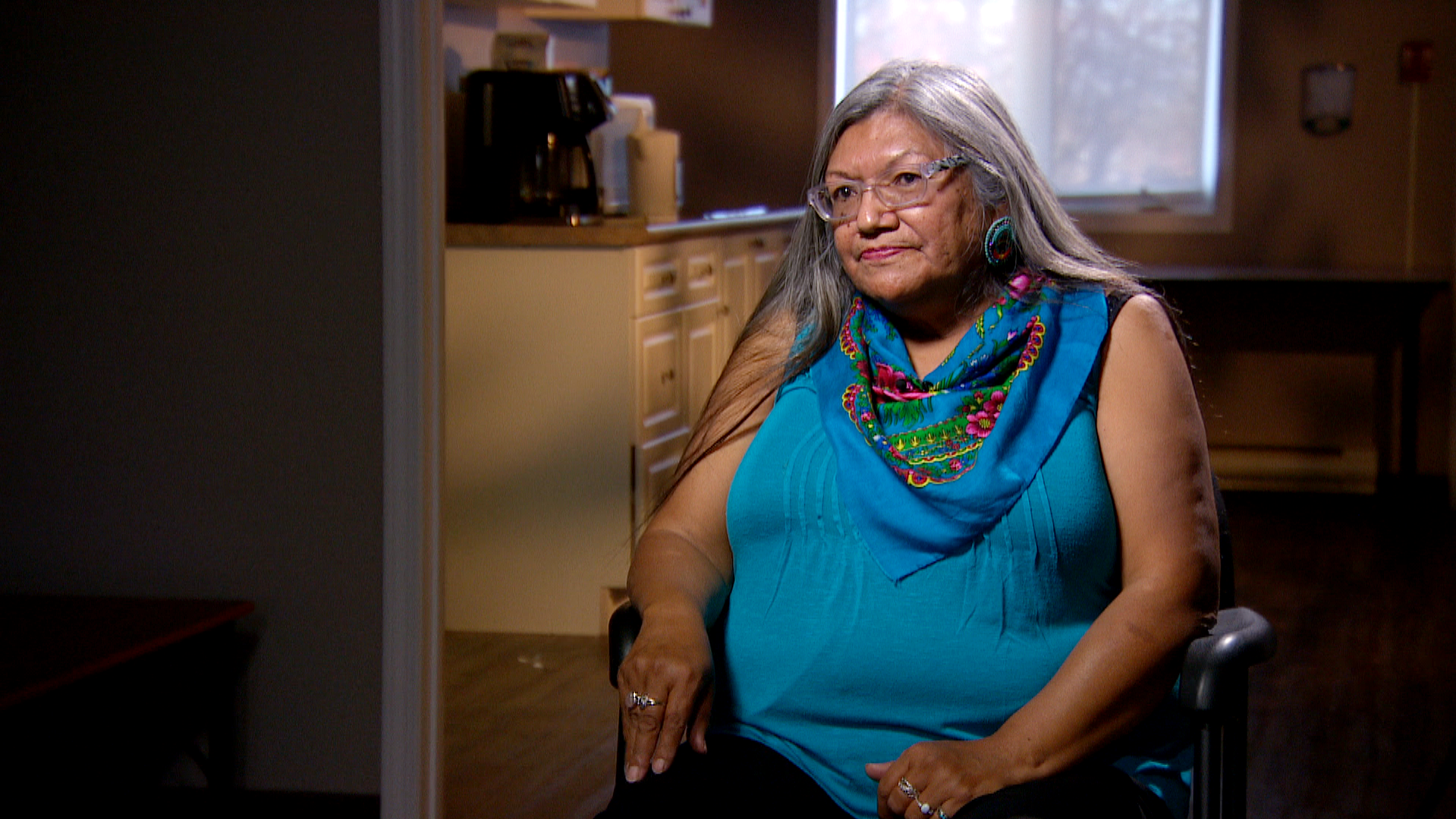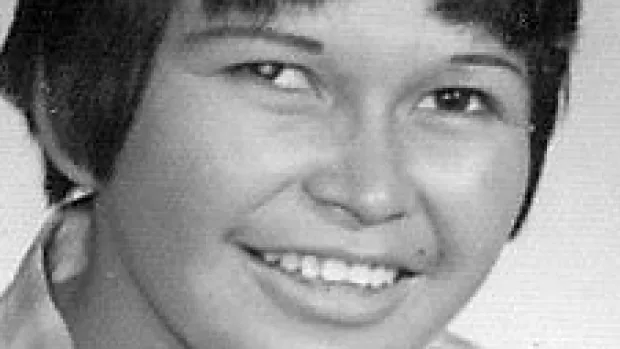On Nov. 12, 1971, Cree teenager Helen Betty Osborne was the victim of a now notorious hate crime that ultimately exposed what Indigenous communities had known all along — racism in Manitoba was alive, thriving and deadly.

On Nov. 12, 1971, a giggly Cree teenager from a northern Manitoba town wrapped up a full day of classes the same way she usually did — playfully teasing her friend and classmate, but too shy to talk to the teacher in front of her.
Hours later, in the cold dark of night, Helen Betty Osborne was targeted, abducted and murdered for sport. She was the victim of a now notorious hate crime that ultimately exposed what Indigenous communities had known all along — racism in the province was alive, thriving and deadly.
“For many years we wondered, is there a serial killer that can get away with what they did? With such a brutal killing to my friend?” said Rita McIvor, who was a friend and classmate of Osborne. “That took a lot of anger and a lot of hate on First Nations women.”
This week marks the 50th anniversary of Osborne’s killing. Her murder — and the flawed investigation that followed — was part of what led to the historic Aboriginal Justice Inquiry. The provincial inquiry, commissioned in 1988, was one of the first to examine the depths of racism in Manitoba’s justice system.
“In almost every aspect of our legal system, the treatment of Aboriginal people is tragic.… Canada’s treatment of its first citizens has been an international disgrace,” Chief Justice Alvin Hamilton and Judge Murray Sinclair concluded in their final 1991 report.
McIvor last saw her childhood friend on Nov. 12, 1971, a cold November day in The Pas, Man. It would be another 16 years before anyone was brought to justice for Osborne’s murder.
The two friends were from different communities: Osborne was from Kinosao Sipi Cree Nation (also known as Norway House), McIvor was from Tataskweyak Cree Nation, but they’d attended residential school together before reuniting as classmates again in The Pas, about 630 kilometres northwest of Winnipeg.
WATCH | Rita McIvor remembers her friend, Helen Betty Osborne:

‘I called her Betty’: 50 years later, remembering Helen Betty Osborne
Rita McIvor, a childhood friend of Helen Betty Osborne, recalls her shy, playful classmate, who was murdered in 1971. 2:49
Osborne (“I called her Betty,” McIvor said) was sitting in class, and, as was often the case, asked McIvor about her homework for the day.
“She had the sharpest pencils and she’d poke me and say, ‘What does that teacher want us to do for an assignment?'” McIvor recalled. “Because she was too shy to ask the teacher. She liked to laugh, but she was shy.”
McIvor accommodated her, though she teased her right back: “Why are you asking me? Because none of us ever do homework.”
Still, McIvor said she admired her friend. Betty was “always taking care of herself — how she looked, how she dressed, how she took care of her work.”
“Me, I’m the opposite. So that’s the thing I remember the most.”
Later that night, McIvor saw her friend again, walking outside. It was dark and cold and McIvor was worried.
“I said, ‘Come on, I’ll take you home,'” McIvor said. “And she got away from me. That was the last time I seen her.”
‘It affects us today’: cousin
Come Monday morning, the rumours were swirling. A body had been found. A woman had been murdered.
“All I know is I heard somebody got killed,” McIvor said. “The scary part was not knowing who, or what happened.”
McIvor’s sense of unease grew when she arrived at school. Betty’s chair was empty.
“I found that so strange and so eerie. If anyone would make it to class every day, it would be her.”
Within days, details of the discovery were revealed. The body that had been found in the bushes near the pump house at Clearwater Lake, just north of The Pas, was Helen Betty Osborne’s.
Over time, details of the crime were revealed. Osborne had been beaten, burned and stabbed more than 50 times.
For more than a decade, the names of those implicated in her attack swirled around the streets, inside bars and even among justice officials.
Four men were implicated in Osborne’s killing, and three were eventually charged, according to the Aboriginal Justice Inquiry report.
Dwayne Archie Johnston — the only one found guilty in her killing — was convicted of second-degree murder in 1987.
Prior to his preliminary hearing, Lee Colgan was granted immunity against prosecution in exchange for his testimony. James Houghton was acquitted at trial.
The fourth man, Norman Manger, was never charged.

“It affects us today,” said her cousin Gordie Ross. “My mom, my one auntie, she still hurts today. And every time she thinks about it, she just can’t take it.”
Ross grew up knowing about his distant cousin but didn’t know the details until he was a teenager and saw Conspiracy of Silence, the CBC TV movie about Osborne’s life and death.
“My family was watching this video and I was wondering why they started crying and they told me this was their cousin,” Ross recalled. “They all just burst out crying.”
‘Nobody was ever held accountable’: Sinclair
What’s worse is that what happened to Helen Betty Osborne wasn’t an anomaly. Long before Murray Sinclair went on to be co-commissioner of the Aboriginal Justice Inquiry, he was a practising lawyer who heard stories about Osborne’s death and others like hers.
“It wasn’t just in The Pas,” Sinclair said.
“There were other communities where these kinds of things had happened, and they’d often talk about Indigenous girls going missing and not being discovered or being discovered dead. And nobody was ever held accountable for their deaths.”
To see each other today with grey hair would be a blessing.– Rita McIvor
It’s why Ross himself pulled up roots, relocated to The Pas and became a Manitoba First Nations Police Service constable in neighbouring Opaskwayak Cree Nation.
“I don’t want another Helen Betty Osborne to happen, and I’ll do my best to be out here, to try and prevent that,” he said
Rita McIvor, meanwhile, keeps her childhood friend from a half century ago alive in her heart — her friend who should have lived to be a mother. A teacher. Maybe even somebody’s kookum by now, she said.
“To see each other today with grey hair would be a blessing,” McIvor said.”I would tell her about all the stuff that she missed out on.”

Friend, cousin reflect on life, death and legacy of Helen Betty Osborne, 50 years after her murder
On Nov. 12, 1971, Cree teenager Helen Betty Osborne was the victim of a now notorious hate crime that ultimately exposed what Indigenous communities had known all along — racism in Manitoba was alive, thriving and deadly. 5:24

